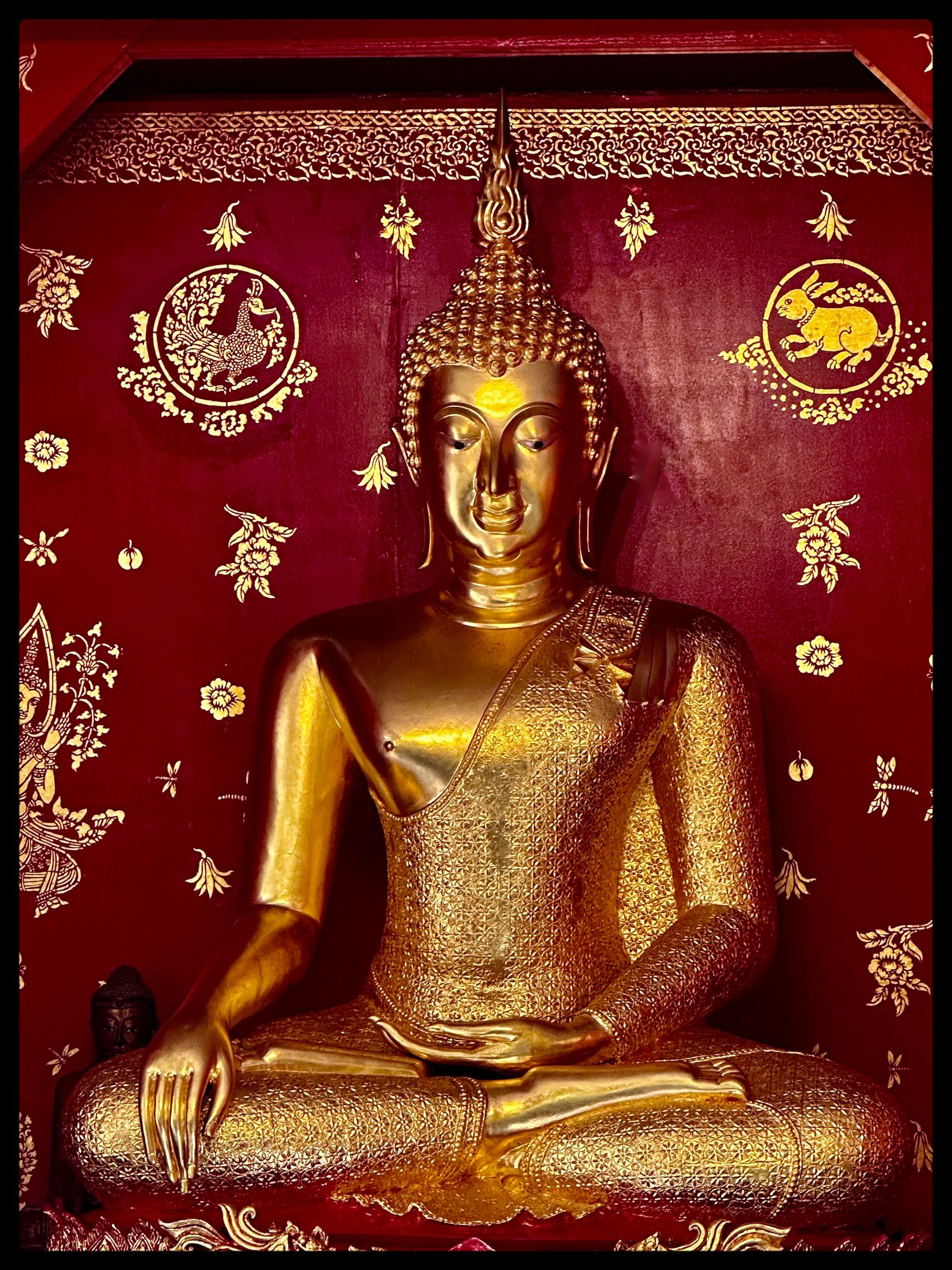I recently had an opportunity to chat with Ajahn Saen for a bit about the history of his temple—Wat Nong Bua.
Here’s what I came to understand:
The temple was founded in 1881 AD, in a forest where many of the local villagers were afraid to go for fear of ghosts. Traditionally, monks would often establish temples in places that people were afraid to go, in an effort to help them overcome their fears. When Wat Nong Bua was founded, other area temples (such as Wat Phra That Doi Saket) existed but had been abandoned. And so the few families living in Doi Saket would travel to Wat Nong Bua to make merit.
Before the temple was built, poachers would sometimes steal cows and water buffaloes, kill them, and leave their remains in the forest where the temple would eventually be built. Surrounding a big but largely stagnant pond, the forest was also prime habitat for mosquitoes. Perhaps for these reasons, the area was potentially diseased when the temple was founded. As such, in the early days of the temple’s existence, many people would get sick and die not long after visiting.
Ajahn Saen came to Wat Nong Bua in 1980 as a 13-year-old novice. Although he became a novice in Bangkok at Wat Benchamabophit (aka “Marble Temple”) and took bhikkhu ordination at Wat Phra That Doi Saket, Wat Nong Bua has been his home for the nearly 40 years he’s been in robes. Around 1995, the existing abbot of the temple moved away and so the lay community asked Ajahn Saen to be the new abbot. He’d been intending to travel to India for study but instead accepted leadership of Wat Nong Bua.
For many years, area novice monks would attend school at nearby Wat Phra That Doi Saket—many of them walking up the hill to school from their home monasteries—but since the temple was big and busy, and the abbot saw the need to address the inherent tourist element at the temple, it was decided that the school needed to be moved. After discussion between principal Ajahn Insorn and Ajahn Saen it was decided that Wat Nong Bua was a good location for the new school. And so, seven years ago Doi Saket Phadungsasana School was established at Wat Nong Bua. It now serves the needs of some 180 novices.
Never abandoned, today Wat Nong Bua is home to six monks and 14 novices—a typical population for much of the history of the monastery. As from the beginning, the temple has a lot of trees, including a large Bodhi tree more than 100 years old near the school cafeteria. It is a peaceful and warm place, made all the more welcoming by its happy and smiling leader—Ajahn Saen.

